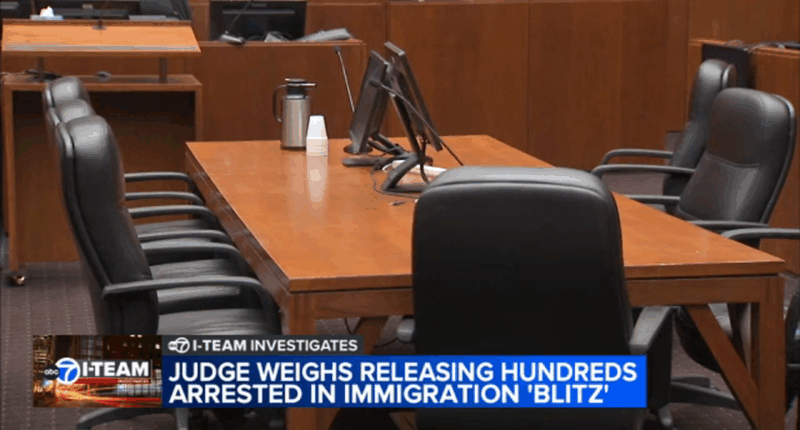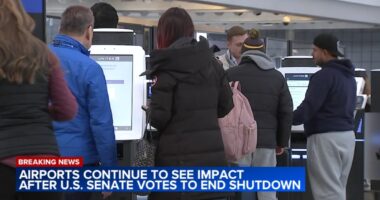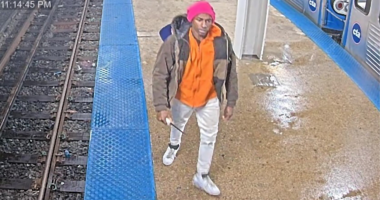Share this @internewscast.com
CHICAGO (WLS) — A federal judge is currently deliberating on whether to release hundreds of individuals detained by federal agents during a recent immigration operation in the Chicago area, which has caused significant unrest.
The National Immigrant Justice Center’s lawyers contend that the federal immigration agents’ arrests of numerous undocumented individuals breached a consent decree applicable in Illinois and five surrounding states.
ABC7 Chicago is now streaming 24/7. Click here to watch
This consent decree restricts the conditions under which agents can conduct warrantless arrests in the enforcement of civil immigration laws.
On Wednesday, U.S. District Judge Jeffrey Cummings is anticipated to provide further clarity on his decision regarding the potential “equitable relief.” This could involve ordering the release of the detainees under “alternatives to detention,” such as participation in ankle monitor programs or scheduled virtual check-ins with immigration officials via mobile applications.
Last month, Judge Cummings determined that agents had violated the terms of a prior consent decree concerning warrantless arrests in the Chicago area, known as the 2022 Castañon Nava settlement.
Following this ruling, legal representatives from both sides have been collaborating to ascertain the number of arrests made this year by immigration agents that were in violation of the established consent decree.
As part of that consent decree, ICE agreed to certain conditions for arresting someone in the Chicago area without a warrant, including pre-determining whether there is probable cause to believe the person is in the country illegally, and whether they are also a flight risk; two requirements that immigrant advocates say have been flouted in hundreds cases, including the recent arrest at a Chicago day care.
Diana Patricia Santillana Galeano was detained by federal agents and dragged out of the Rayito de Sol’s Spanish-language immersion day care on Chicago’s North Side on Nov. 5 in front of other parents and children.
A DHS spokesperson said Santillana Galeano fled a traffic stop and ran into the day care.
The arrest sparked outrage from the community.
“We had masked ICE agents following a day care educator into the day care, where there were parents, there were children,” 47th Ward Alderman Matt Martin said the night of Santillana Galeano’s arrest.
Santillana Galeano’s attorneys have since filed a habeas corpus petition in federal court, seeking her release on bond. A court date has yet to be set, her attorneys told the I-Team on Monday.
In her habeas petition, Santillana Galeano’s attorneys argued her arrest violated the Castañon Nava consent decree as agents arrested her in the day care without a warrant.
It’s cases like these that Mark Fleming of the National Immigrant Justice Center believes are happening daily.
“As we’re digging into it, we are very concerned that many, if not most [of ICE arrests], are violations of our consent decree,” Fleming told the I-Team.
Fleming said so far, the list of people arrested in violation of the consent decree has grown to more than 3,000 people.
“Our initial analysis is that it’s over 3,000 arrests,” Fleming told the I-Team. “We’ve started to dig into the case file that they produced to us, and the vast majority are violations. If they did not have a prior order of removal, in almost all circumstances, they’ve been uniformly violating the consent decree.”
So far, Fleming said that ICE has produced a list of 3,800 people, and U.S. Customs and Border Protection and Border Patrol has given a list of 1,200 people, but he stressed that there may be duplicate entries on both lists, so his team does not have a solid total figure yet. Also, those lists were only through the beginning of October, and do not include arrests in the last month.
Fleming has argued Judge Cummings has the ability to grant equitable relief in the form of releasing those arrested in violation of the consent decree.
“We had built in when we negotiated this with the government [in 2022], we were very clear that in the context of repeated material violations… that the court have the tools to provide any form of ‘equitable relief’ necessary, in order to fulfill the bargain that we entered into,” Fleming explained.
“The bargain was if you violate this, the individual be eligible for release,” Fleming said.
After reviewing arguments on both sides, ABC7 Chief Legal Analyst Gil Soffer said it may not be that simple.
“There’s not an obvious answer here,” Soffer said. “In the plaintiff’s favor, they have the language in the consent decree which empowers the court to exercise, really almost any equitable power.”
Soffer continued, “On the other side, there’s a statute that makes it very difficult for the district court, federal district court, to require the government to take or not take any action in the immigration space.”
Attorneys representing the Department of Homeland Security have argued that Congress stripped federal courts of their authority to grant parole to large groups of immigrants in ICE custody.
In their filings, government attorneys argue, “Congress has vested the authority to grant parole solely with the Secretary of Homeland Security… Federal courts cannot order the Department of Homeland Security to release any aliens on parole because Congress has stripped them of that authority.”
“There’s really a conflict of provisions here,” Soffer said, speaking to the statutory requirements.
In their review of people arrested by agents potentially in violation of the consent decree, Fleming said more than 1,000 people are no longer in the U.S., meaning they may have been deported already after signing voluntary removal orders.
“A lot of these folks have never had any interaction with law enforcement before, nor been subject to detention, and so it’s horrifying,” Fleming explained.
Fleming continued, “What we’ve raised to the court is if you don’t provide this interim relief, there will be no one left. At the end of this, we may find thousands of violations, but there may be no one left.”
















